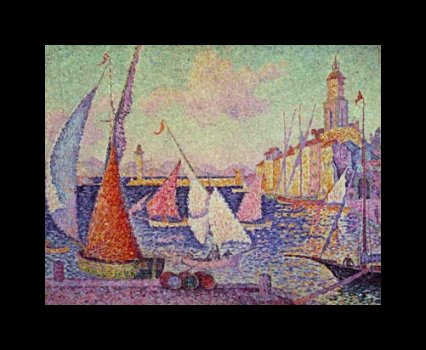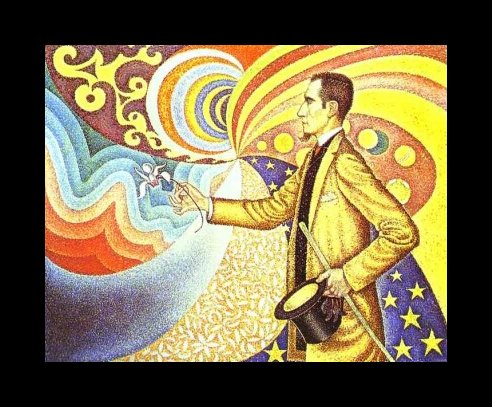Paul Signac (1863-1935)
Get a Signac Certificate of Authenticity for your painting (COA) for your Signac drawing.
For all your Signac artworks you need a Certificate of Authenticity (COA) in order to sell, to insure or to donate for a tax deduction.
Getting a Signac Certificate of Authenticity (COA) is easy. Just send us photos and dimensions and tell us what you know about the origin or history of your Signac painting or drawing.
If you want to sell your Signac painting or drawing use our selling services. We offer Signac selling help, selling advice, private treaty sales and full brokerage.
We have been authenticating Signac and issuing certificates of authenticity since 2002. We are recognized Signac experts and Signac certified appraisers. We issue COAs and appraisals for all Signac artworks.
Our Signac paintings and drawings authentications are accepted and respected worldwide.
Each COA is backed by in-depth research and analysis authentication reports.
The Signac certificates of authenticity we issue are based on solid, reliable and fully referenced art investigations, authentication research, analytical work and forensic studies.
We are available to examine your Signac painting or drawing anywhere in the world.
You will generally receive your certificates of authenticity and authentication report within two weeks. Some complicated cases with difficult to research Signac paintings or drawings take longer.
Our clients include Signac collectors, investors, tax authorities, insurance adjusters, appraisers, valuers, auctioneers, Federal agencies and many law firms.
We perform Paul Signac art authentication, appraisal, certificates of authenticity (COA), analysis, research, scientific tests, full art authentications. We will help you sell your Paul Signac or we will sell it for you.

An Impressionist and founding member of the Divisionists, Paul Signac was also a leader in the use of Pointilism. Head of the Neo-Impressionists after the death of Georges Seurat, Signac utilized science to create his paintings and knew the importance of light and structure.
While Signac is well-known for paving the frontier for Pointillism, what many don’t realize is that Signac was a prolific sketcher, and did etches, lithographs, watercolors and many pen and ink compositions. Signac left behind a number of watercolors of seascapes, many of them being of famous ports like Marseille, Istanbul and Venice. This was inspired by Signac’s love of the sea, as he was an avid sailor. Through his journeys, Signac was able to collect vibrant colors from all over the Mediterranean and it reflected in his work.
There are many ways to tell whether you have an original Signac or not. Signac had little or no formal training, and trained himself to paint by studying the style of Monet, therefore Signac’s work is slightly reflective of Monet’s. Another telltale way to verify a Signac work is to examine the colors post 1884. This is when he began to work with Signac and they both rejected the idea of “muddied” colors. A true Signac Pointillism piece is composed of only true, vibrant hues “dotted” in such a way that the viewers eye sees shading or muted colors.
Throughout his life, Signac was also an enthusiastic supporter of Socialism, and his political leanings often were reflected in his work. For example, “Le Demolisseur” depicts a laborer with a pick-axe, and is said to represent Signac’s Socialist views.

Signac also had a series of oil paintings done in Pointilism from 1889-1893 that were based on operas and musical pieces. The bulk of these paintings were done in the summer of 1891, and were called “Symphonic Seas: Oceans of Liberty” (“La Mer, Les Barques”). His idea was to capture a particular piece of music and illustrate it to complement and parallel the ripples in the sea. Therefore, all of these paintings were seascapes, and had a distinctly different look than anything else Signac ever did. These pieces were practically photographic in nature (like his 1891 work Scherezo), and seemed to rely less on Impressionistic ideals. It is said that he painted around 21 of these in the series, but there could be more somewhere due to the fact that they are not true to Signac’s style at the time.
Another interesting view on Signac is how similarly his style and paintings mirrored his friend and mentor Seurat. In particular, Signac’s oil painting “Breakfast in the Dining Room” (1886) echoes Seurat’s “Sunday in the Park on the Island of Grande Jatte” (1884). The two most dominant women (the maid and the woman with the parasol) in these paintings are very similar in stature, placement on the canvas and appearance. This may lead one to believe that Signac and Seurat had a hand in each other’s work, or the work of other lesser-known Pointillism students of the time. Perhaps the mystery lies in this duplicated profile of the woman.

Signac was also known for his support of up and coming art forms of his time, like Cubism and Fauvism (he was the first person to ever purchase a Matisse!) It was during this time that Signac began to reject “points” and instead began to use small squares of color, which created a mosaic-like effect, such as “Arc du Ciel, Venise”. This would be another tell-tale way of deciphering whether you have a Signac or not; look for a mosaic-style if it was painted after the turn of the century. Also, look for his signature “P. Signac” in the lower left corner of his works.
Currently, Signac’s oil paintings are being sold for upwards of $500,000 on on-line auctions, and his work “Vue de Port”, a watercolor and black chalk sea sketch is set for auction at Christie’s starting at $18,000. Sotheby’s also has Signac work currently set for auction. His oil painting “Les Andelys, Les Lauveueses” is starting at 2.4 million. It is not known how many works this prolific artists has in his oeuvre.

Reviews
1,217 global ratings
5 Star
4 Star
3 Star
2 Star
1 Star
Your evaluation is very important to us. Thank you.
